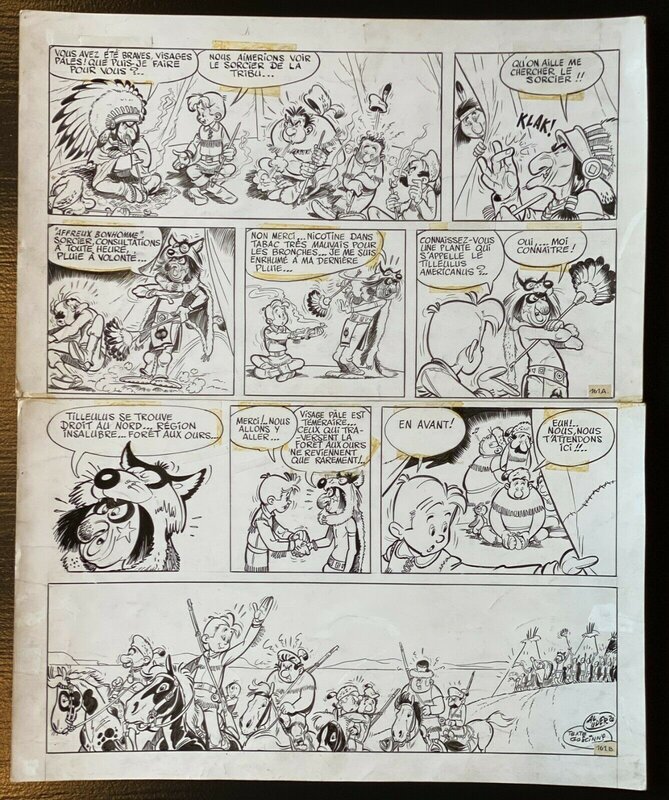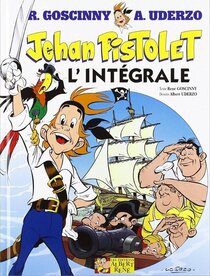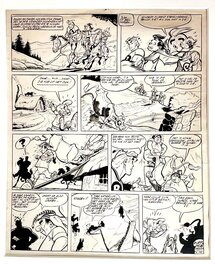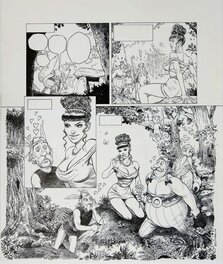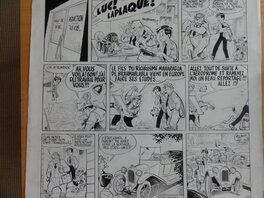Dans la collection de ASBCR
Jehan Pistolet (Pitt Pistol) planche 161 - Albert Uderzo
Encre de Chine
42 x 52.5 cm (16.54 x 20.67 in.)
Ajoutée le 28/09/2021
Lien copié dans le presse-papier !
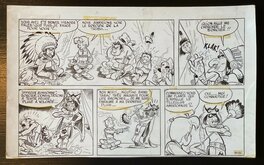
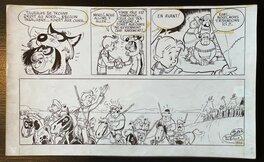
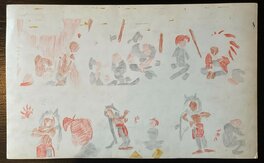
Description
Before Oumpah Pah (and of course Astérix) there were several series that proved Uderzo's growing magnificence as an artist. Led by Goscinny's scripts and dialogues, Jehan Pistolet is their first veritable artistic success. 4 adventures with 177 pages were created (Uderzo numbered them all way through instead of beginning anew with each book) - so 161 is very close to the end, when Uderzo is clearly at his first artistic peak and Goscinny's writing gets used to funny characterization and dialogues.
It's nice to see "typical" characters appearing here on this page that are very close to renderings in Oumpah Pah and of course "Asterix and the Great Crossing" (which was the base for the animation movie "Asterix in America"). It's especially nice to see a page with a larger panel - and though it looks like a perfect ending page, the adventure continues for 16 more pages! Signed by both (well, Uderzo signed for Goscinny) and 100 % pure Albert Uderzo with fluid perfect lines, as he had no assistant in the time before the Asterix success kicked in.
Uderzo also included his friend Goscinny as a character in this series, have a look if you can spot him right on this page!
As typical for these times, the page has color indications on the back; with this page, it's black pencil and color pencils instead of waterbased colors.
It's nice to see "typical" characters appearing here on this page that are very close to renderings in Oumpah Pah and of course "Asterix and the Great Crossing" (which was the base for the animation movie "Asterix in America"). It's especially nice to see a page with a larger panel - and though it looks like a perfect ending page, the adventure continues for 16 more pages! Signed by both (well, Uderzo signed for Goscinny) and 100 % pure Albert Uderzo with fluid perfect lines, as he had no assistant in the time before the Asterix success kicked in.
Uderzo also included his friend Goscinny as a character in this series, have a look if you can spot him right on this page!
As typical for these times, the page has color indications on the back; with this page, it's black pencil and color pencils instead of waterbased colors.
5 commentaires
Pour laisser un commentaire sur cette œuvre, veuillez vous connecter
A propos de Albert Uderzo
Albert Uderzo est un dessinateur et scénariste de bande dessinée français d'origine italienne. Il est le créateur, avec le scénariste René Goscinny, de la série Astérix. Capable de dessiner dans des styles très différents (du réalisme de Tanguy et Laverdure au semi réalisme d'Astérix), son grand sens du gag visuel complétait parfaitement les talents d'humoriste de René Goscinny.

